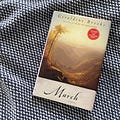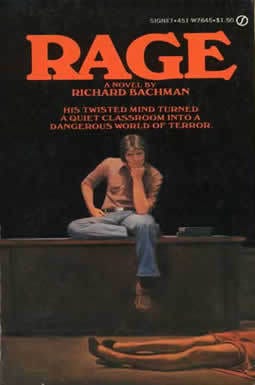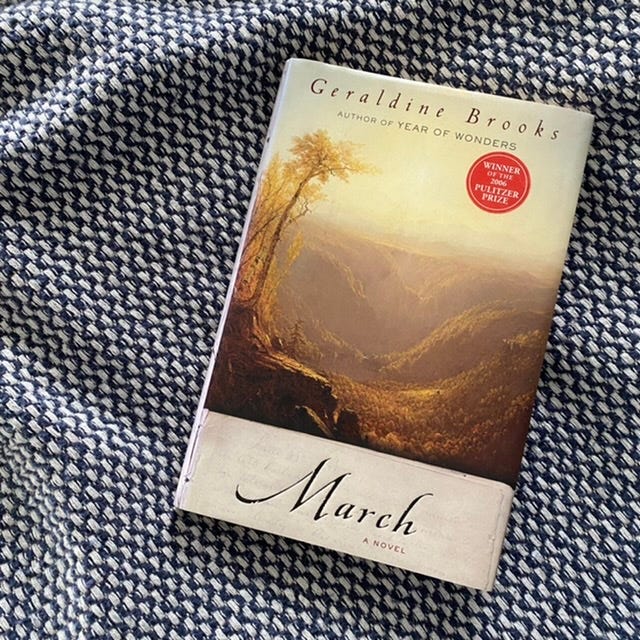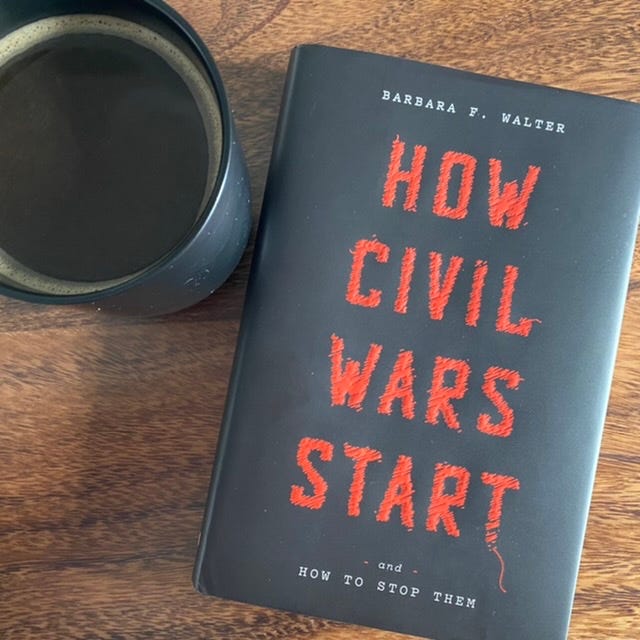Few American novels are as enduring and beloved as Little Women. The story of the March girls—Meg, Jo, Beth, and Amy—is as nice and wholesome a story as you’ll find. That’s also its shortcoming for modern adult readers, though; there’s not much complexity to the characters and the story just doesn’t move quite enough for me.
Now, I’m not here to denigrate Little Women. It’s truly a lovely story and a pillar of American literature—Louisa May Alcott’s portrayal of a Civil War-era family is among my 19th-century favorites.
But, the reality is that I’m far more drawn to a story like Geraldine Brooks’ March, in which the author explores Robert March’s battlefield experience, along with his youthful reveries. It’s fan fiction, of sorts, and this Pulitzer-winning novel was my first 5-star read of 2022. More on that one below.
In this edition I also feature a brand new book about modern civil wars.
Before getting there, though, I have just a couple links to share. So let’s jump in! As always, please let me know what you’re reading and enjoying this week. I love to hear.
Rage by Stephen King
My next Stephen King review is up at stephenkingreader.com. Rage is one of the most unique books in the scare-master’s catalogue because it’s no longer in print. It’s also the first use of King’s “Richard Bachman” pseudonym.
It’s good that those two contextual stories are interesting, because the novel itself kinda blows. It’s generally ranked towards the bottom of King’s 60+ novels, so I wasn’t all that surprised. Still, for the King fanatic, it remains a must-read.
My Daily Reading Schedule
On Tuesday, paid subscribers got some answers to one of the most frequent questions I get about my reading: “With a busy schedule, how do you fit in the minutes and hours to consistently read 100+ books per year?” In a nutshell, it involves early mornings, 10-minute bits of time throughout the day, and ending the night with a book.
Subscribe below to get all the deets:
March by Geraldine Brooks
Published: 2005 | Pages: 280
In Little Women, Alcott doesn’t really probe the inner lives of Mr. and Mrs. March. They’re just too wholesome in that story and not quite real enough. (Possibly we’re seeing the girls’ perspective.) In March, Geraldine Brooks brilliantly explores those oh-so-human complexities of Marmee and Robert March.
We first encounter Robert as a reluctant chaplain on a Civil War battlefield in 1862. He’s writing letters home to his girls, which we see glimpses of in Little Women. But those letters are sanitized compared to his real and brutal experience of war.
The reader then gets flashbacks going all the way back to his days as a young traveling salesman, where he spends quite a bit of time in the slaveholding South.
Going back and forth in time between his time in the Civil War and his life leading up to that—including a fateful and less-than-innocent introduction to Marmee—every page holds surprises that both break and uphold some of the views you might have about good old Papa March. Sure, there’s some genuine wholesomeness, but also a few inner demons to slay.
Then, of course, we have to get Marmee’s perspective on the whole thing, particularly after Mr. March was injured and hospitalized. In short, Robert wasn’t the only one who had some demons to exorcise while away from the children.
Throughout the story, Brooks beautifully and authentically captured the tone of the era while keeping it incredibly readable—something that every writer of historical fiction has to wrestle with.
My rating was solidly 4 stars until the final 75 pages or so, when it ratcheted up to 5 stars. March was thoroughly enjoyable, particularly with Little Women fresh in the mind.
How Civil Wars Start: And How to Stop Them by Barbara Walter
Published: 2022 | Pages: 226
This short, punchy new book is hot off the presses and has already garnered a lot of attention in the wake of the January 6 anniversary of the capitol riot.
Walter is a scholar of global civil wars whose career has revolved around looking for warning signs and predicting where civil unrest will strike next. Interestingly, she started writing this book back in 2018 and has only seen her work become more and more important.
Throughout the book, Walter points out the various predictors of civil war and how the United States has crept closer and closer to the warning zone—where war is not a guarantee by any means, but the conditions are ripe.
It’s sobering and disconcerting to say the least. What was most interesting to me was seeing the concurrent rise of social media and global unrest. Whereas authoritarian wackos used to be fact-checked and have no platform, social media gives these people a platform that's basically fully unchecked. It *seems* extremist when you say it out loud, but Walter's research (along with a few other books I've read lately) has me convinced that social media is an actual threat to democracy.
Now, it’s easy to see this book as taking an alarmist position. That was my instinct, actually, but I tried to push those feelings aside and accept her premise. If she’s wrong, great, but what if she’s not wrong? Isn’t it more useful to have this information in hand—including what a modern civil war would look like—than not?
While I don’t think outright civil war is on the horizon, it’s a sobering hypothesis to explore, especially as homegrown extremist behavior and intensely contested elections become more common every year.
It’s a short read and well worth the time for anyone interested in modern politics and international affairs.
Thanks so much for the time and inbox space—I sure appreciate it!
-Jeremy






For what I’m reading and loving this week. Amor Towles’s The Lincoln Highway. Halfway through and delighted. I was in the minority in my disappointment of Moscow, but this satisfies on every page so far.
If you liked March, try Spying on the South by the late Tony Horwitz. He was married to Geraldine Brooks and wrote the story by following the path of Frederick Olmsted, who later designed Central Park in NYC. Of course, he also wrote Confederates in the Attic and an account of John Brown's Raid.